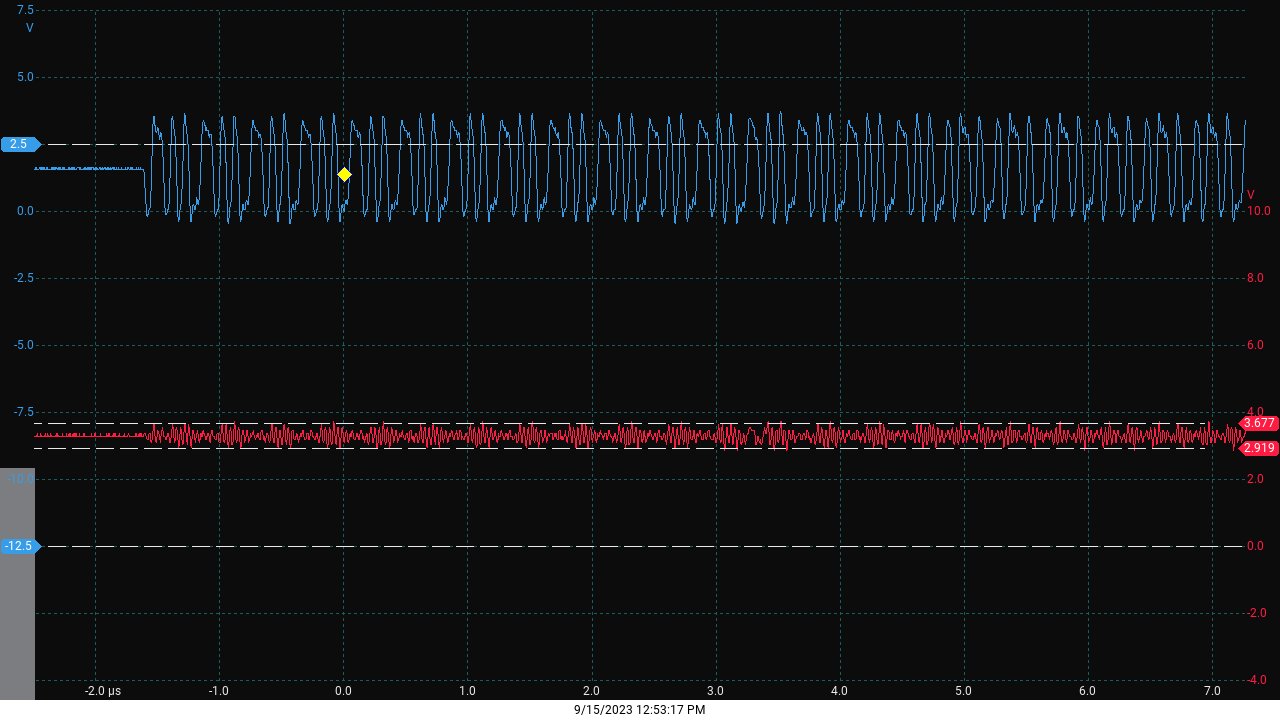I have an embedded system, that whenever the PHY transmits on the twisted pair, the connected hub indicates a collision, and I see nothing on Wireshark. I am 100% confident it is not a software problem, as almost identical (pin mux) code runs perfectly fine on the CPU's evaluation board. I have verified that the pin muxing is correct, and there is data on the RMII interface going to the PHY. The software is pretty simple and just attempts to ping an address.
The PHY in question is the KSZ8081RNB. RJ45 + Magnetics.
Eval board Schematic: (I missed the TVS diode but it is not populated on the eval board)
Datasheet for the Eval board magnetic
(Note that the part number I listed earlier is the correct one, we use the RMII interface not the full MII).
Testing setup: My board -> MDI Cable -> 10Mbps 1/2 duplex hub -> MDI -> PC with Wireshark. We have also tested this with a gigabit switch (as well as connected directly to the PC), and still indicated link and activity going out of the board. I would expect to see the ARP requests out of the board on Wireshark. We have also tried using an MDI-X cable, and getting a dump of the PHY registers confirms that it detected the crossover and corrected it (PHY supports auto MDI-X). In all cases, the link lights on both devices indicate that the link is up and there is activity on the line.
What could be causing this, or what am I missing?
UPDATE 9/15/23 AM PHY Registers
0 - 0x1000
1 - 0x786d
2 - 0x22
3 - 0x1561
4 - 0x1e1
5 - 0x20
6 - 0x4
7 - 0x2001
8 through 21 - 0's
22 - 0x1
23 - 0x3c01
24 - 0x801
25 - 0x7777
26 - 0x7777
27 - 0x1
28,29 - 0's
30 - 0x111
31 - 0x8180
Edit 9/15/23 PM - Scope captures. These were taken with 10Mbps 1/2duplex mode forced on the phy.
 .R=TX+ B=TX- P=R-B. This is taken without any cable connected, by forcing register 0x1f bit 11 high.
.R=TX+ B=TX- P=R-B. This is taken without any cable connected, by forcing register 0x1f bit 11 high.
 B=TX+ R=RX+. Attempting to measure crosstalk/noise without cable connected (same settings as previous image). Roughly 750mVp-p of noise (which is only from my board + magnetics)
B=TX+ R=RX+. Attempting to measure crosstalk/noise without cable connected (same settings as previous image). Roughly 750mVp-p of noise (which is only from my board + magnetics)
 B=TX+ R=RX+.
For certain something is transmitting and causing a collision. The delay is roughly 2.5us. This was taken with the same 10Mbps hub that has been previously used.
B=TX+ R=RX+.
For certain something is transmitting and causing a collision. The delay is roughly 2.5us. This was taken with the same 10Mbps hub that has been previously used.
 This image taken with Gigabit switch. No phantom transmitter, but still no link. Settings are still 10Mbps 1/2 duplex.
This image taken with Gigabit switch. No phantom transmitter, but still no link. Settings are still 10Mbps 1/2 duplex.


